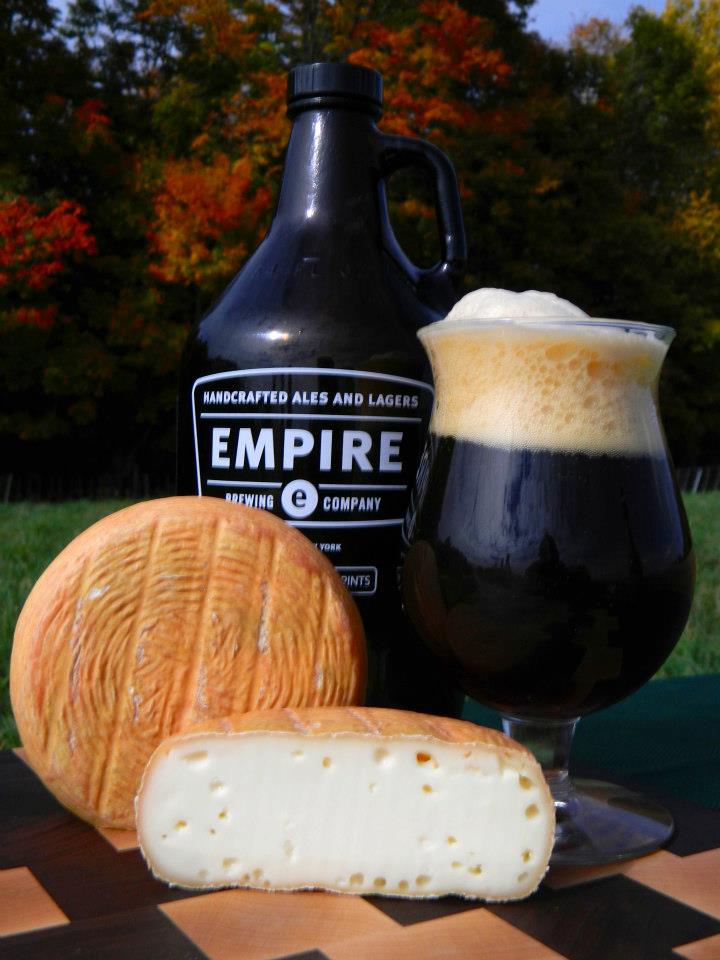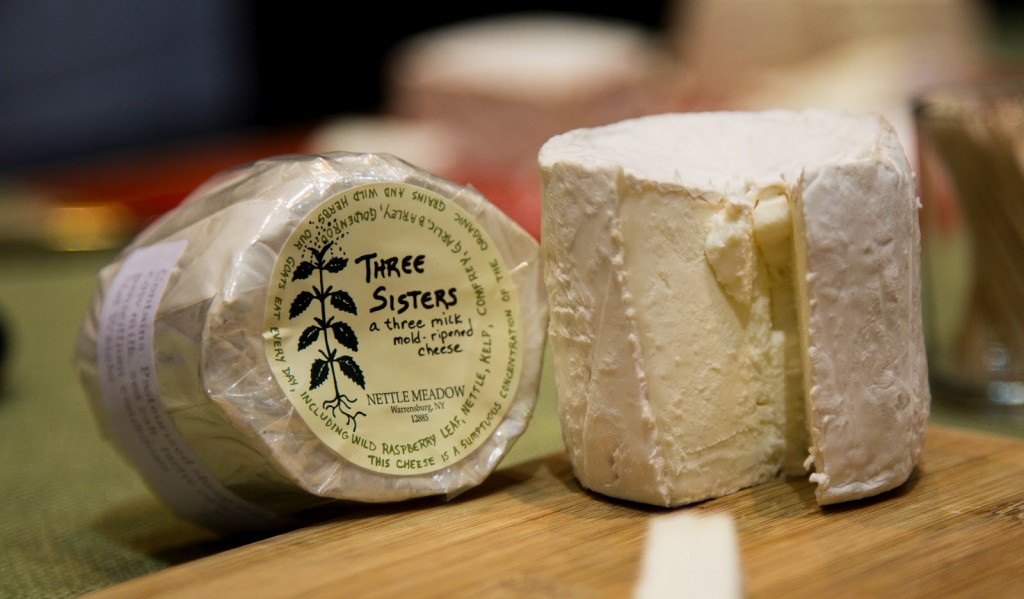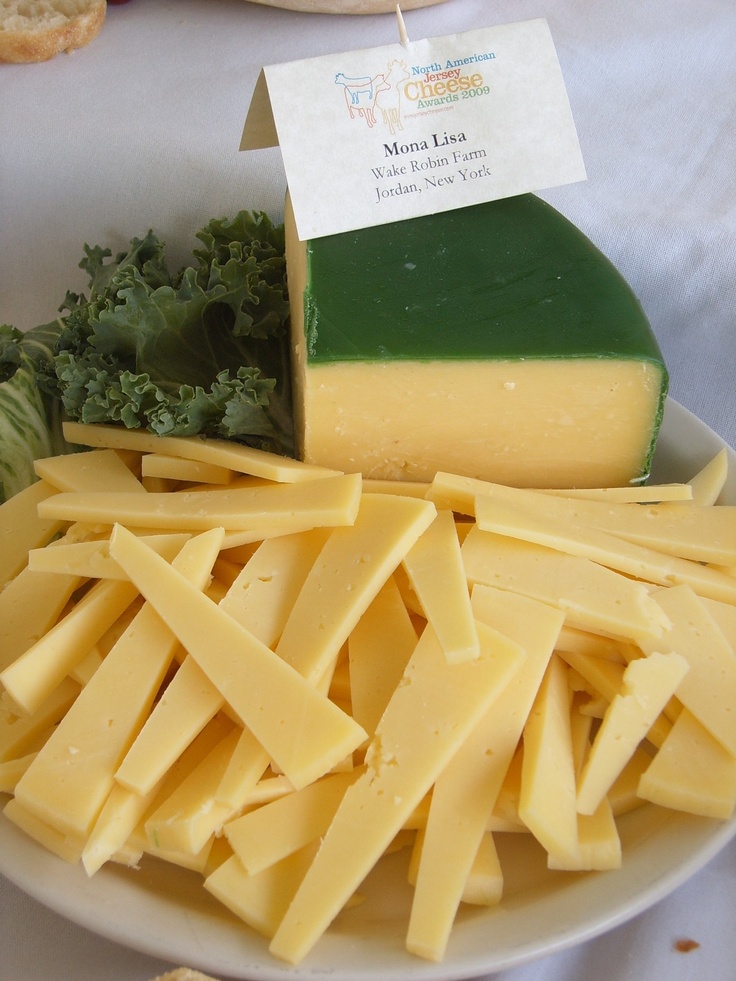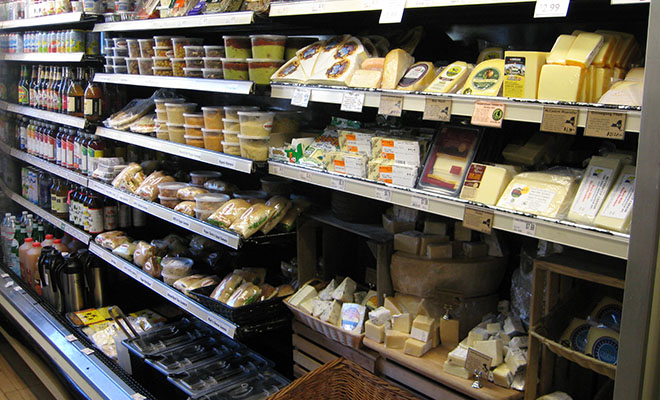‘Tis the season for entertaining. A classic, easy go-to for party menus is a cheese plate. All too common, unfortunately, is a redundant cheese plate, filled with same-size cubes of orange and white cheddar and Swiss cheese, slices of pepperoni — and not much else.
We asked a couple local cheesemakers and a couple chefs for their expert advice in putting together a kick-butt cheese plate. Here are some of their pro tips:
What’s the ideal number of cheeses? Answers to this question vary. Keep crowd size in mind, and whatever number you choose, mix up flavors and textures.
• Madison County-based chef Alicyn Hart thinks three is an ideal number of cheeses for a cheese plate, especially as an appetizer, which is intended to whet the appetite. “Otherwise,” she says, “you’ll overwhelm the palate.” Hart recommends a soft, bloomy-rind Hudson Valley Camembert (like Three Sisters, from Nettle Meadow Farm) or Rippleton, a washed-rind sheep’s milk cheese from Meadowood Farms, Cazenovia; a firmer, aged cheese, like Marielle by Dutch Girl Cheese, Plainfield Center (studded with black pepper and cumin seed) and a local blue, such as Cayuga Blue, a creamy goat blue by Lively Run Goat Dairy in the Finger Lakes. If blue cheese is not your thing, she says, substitute a well-aged cheddar.
(Note: Hart, who operated Circa New American Bistro and Market in Cazenovia until earlier this year, has joined the seasonal dining team at the Foggy Goggle Restaurant at Toggenburg Mountain ski center, Fabius, on a per diem basis and continues Circa’s “locavore” spirit and approach to food in a “mobile” fashion at both public and private events. We’ll catch up with her next week.)
• Meg Schader, co-owner with her husband Bruce of Wake Robin Farm in Jordan, learned from her grandmother to present things in odd numbers, so her preference is three or five cheeses. (Wake Robin cheeses are available Saturdays at the CNY Regional Market in Syracuse, and at the farm). “When I am making a platter, I try to present a variety of textures, flavors and visual appeal. … I usually put a ‘crowd pleaser,’ like fresh curds or Bailiwick Cheddar, a pretty cheese, like our Jalapeño Jack or Brutus Blue and a strong, dry cheese, like our Mona Lisa (an Asiago-style cheese).”
• Barry Sperat, co-owner with his wife, Amy, of 2 Kids Goat Farm in Cuyler, recommends selecting four or five cheeses, with “something for everyone” on the plate. “A good variety to include is a nice cheddar, cheese curds or a mild cheese for the kids, something mold-ripened like a Camembert, Brie or 2 Kids Monique (a flavorful, Brie-style goat cheese) for the more adventurous, a semi-hard like a Gouda or 2 Kids Amy Lynne (our wine-soaked semi-hard cheese)… A soft cheese is a must. I highly recommend 2 Kids chèvre. I also like to add locally made cheeses to my boards from Wake Robin, Meadowood Farms and Three Village Cheese Co.
• Luke Houghton, chef/owner at Pure Catering and Events, near Skaneateles, says number of cheeses “isn’t really a written rule.” “I usually use a cheddar, a blue, something hard, generally Italian or I truly love an aged Gouda. Then a soft-rind cheese like a Camembert or Brie. Then comes in the wild card spots, usually two or three. This is where you have fun: aged Gruyere, goat, aged goat, manchego, Stilton, burrata, tomme, taleggio, really endless possibilities! … I also generally have two or three local cheeses on a board.”

Washed Rind Sheep’s milk cheese in the style of a Reblochon from Meadowood Farms.
Photo from their Facebook page.
Select cheeses made from a mix of milks – cow, sheep, goat: You wouldn’t want to be limited to just one cheese, right? So read the labels, ask questions and mix up the milks. After a while, you’ll do this automatically. Houghton’s local favorites include: Muranda Cheese Co. (cow; cheddar and blue), Wake Robin Farm (cow; cheddar, Mona Lisa and Trillium, a Brie-style cheese), Lively Run Goat Dairy, 2 Kids Goat Farm and 4 Tin Fish Farm (Conquest) for goat chevre, feta and blue and Meadowood Farm for sheeps milk cheeses. Not familiar with goats milk cheeses? Sperat says a great place to start is with Two Kids’ Plain Jane chèvre. “It’s the cheese that started it all at 2 Kids. Its mild flavor and creamy texture changes peoples’ conception of goats cheeses.”
Pull the cheese out of the fridge an hour before your party. To allow the flavors to develop, serve cheese at room temperature.
Include sweet and salty accompaniments: Hart recommends apples, dried cherries or apricots and walnuts, plus a fruit preserve or honey for a touch of sweetness. Houghton is a fan of “greasy cured meat of any kind” (salami, prosciutto, pate) plus quince paste, olives, almonds, fig jam and good, local honey.
Crackers or bread? Meg Schader prefers a simple cracker, while Hart and Luke Houghton prefer oven-dried, crisp toasted bread. “I like to serve my cheeses alone or with a very basic cracker or crostini, making the cheese the star,” Barry Sperat says.
Think outside the supermarket cheese section. Sure, Wegmans is at the forefront of cheese selection. The supermarket chain touts its “cave-aged” cheeses from around the world (aged at a 12,000 square foot facility in Rochester) and larger stores carry a good selection of local and regional cheeses. But you can “shop small” for boutique, artisan cheeses. A good variety can usually be found at the Central New York Regional Market (including family owned Buttercup Cheese, of Central Square) and the Cazenovia Farmers Market (third Saturday of the month at the American Legion Post during winter) usually has three or four cheesemakers in attendance. Greenwood Winery, in East Syracuse, has the popular 1,000 Island River Rat cheddars from Clayton. Syracuse Real Food Co-Op, near Syracuse University, carries plenty of local and regional cheeses. Side Hill Farmers Meats and Market, in Manlius, features goat cheese from 2 Kids Goat Farm, and selections from Dutch Girl Cheese and Meadowood Farm, in its local foods section.
Margaret McCormick is a freelance writer and editor in Syracuse. She blogs about food at eatfirst.typepad.com. Follow her on Twitter at @mmccormickcny, connect on Facebook or email her at [email protected].
[fbcomments url="" width="100%" count="on"]













